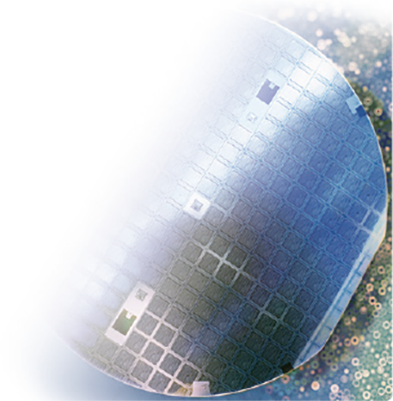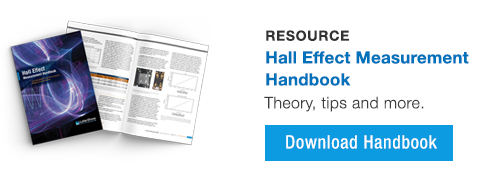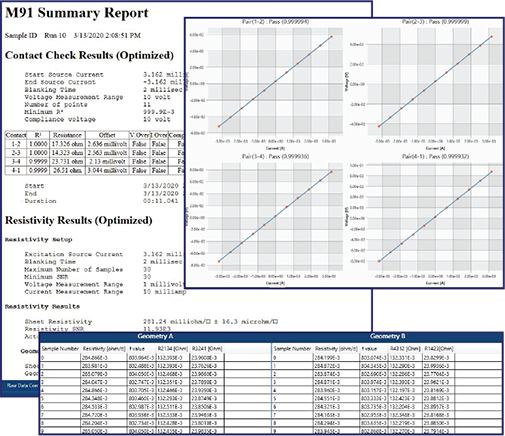MeasureReady™ FastHall™ Station materials and measurement applications
Why it’s optimized for low-mobility materials
Traditional DC field Hall effect measurement is relatively straightforward and reliable for simpler materials with higher mobilities. Measurement difficulty increases and precision decreases as carrier mobilities decrease. This is often the case in promising new semiconductor materials such as photovoltaics, thermoelectrics, and organics.
AC field techniques using advanced lock-in amplifiers and longer measurement windows can extract smaller Hall voltage signals and are commonly used today to explore low mobility materials. Extended measurement intervals can also add error from thermal drift effects and results take longer to get—sometimes many hours.
The FastHall technique eliminates both of these issues — it precisely measures even extremely low–mobility materials in seconds.

Materials
Solar cells
OPVs, a:Si, µc-Si, CdTe, CuInGaSe (CIGS)
Organic electronics
OTFTs, Pentacene, Chalcogenides, OLEDs
Transparent conducting oxides
InSnO (ITO), ZnO, GaZnO, InGaZnO (IGZO)
III-V semiconductors
InP, InSb, InAs, GaN, GaP, GaSb, AIN based devices, high electron mobility transistors (HEMTs) and heterojunction bipolar transistors
II-VI semiconductors
CdS, CdSe, ZnS, ZnSe, ZnTe, HgCdTe
Elemental semiconductors
Ge, Si on insulator devices (SOI), SiC, doped diamond SiGe based devices: HBTs and FETs
Dilute magnetic semiconductors
GaMnAs, MnZnO
Half-Heusler compounds
TiNiSn, ZrNiSn, GdPtBi
Topological semi-metals
TaAs, WTe2, MoTe2
Topological insulators
Bi2Te3, Bi2Se3, Sb2Te3
Transition-metal Di-chalcogenides (TMDC)
WS2, WSe2, MoS2, HfS2
Other 2D materials
BN, graphene structures
Other conducting materials
Metal oxides
Organic and inorganic conductors
High temperature superconductors
Measurement applications
Hall voltage
- Resolution = 1 µV
- Noise = 0.1 µV (RMS), averaged over 1 power line cycle
Resistance/resistivity (four-contact in-line probe and van der Pauw)
- Calculated by instrument
- Resistance range 10 mΩ to 1 GΩ
Magnetoresistance
- System provides field control to measure resistance as a function of magnetic field are saved to file
Hall coefficient
- Calculated by instrument
- Derived from Hall voltage, magnetic field, and current
Hall mobility
- Calculated by instrument
- 10-2 to 106 cm2/V s
Anomalous Hall effect (AHE)
- System provides field control to measure Hall voltage as a function of magnetic field
Carrier type/concentration/density
- Sheet or volume carrier concentration calculated
- Sheet carrier density ≤1017 cm-2 (carrier density depends on measurement parameters)
More science, less time
Owing to the M91 measurement controller included in the system, the FastHall Station is extremely fast, reducing analysis time in some cases by 100× when compared with various other HMS solutions. Most commonly measured materials can be analyzed in a few seconds. Even extreme high resistance (up to 1 GΩ) or low mobility (~0.01 cm²/V s) samples can generally be analyzed in under 2 min. With other HMS techniques, this could take hours to complete.
The FastHall Station encourages rapid initial assessments of materials to determine if further study or greater precision is warranted. Spend less time waiting and more time doing real science.

Get all the data
Analysis of low mobility or high resistance materials faces challenges due to very low signal-to-noise ratios. Inaccurate measurements are likely unless sophisticated techniques and/or larger measurement samples are used. Also, with some HMS solutions, the researcher often has little chance to double check the intermediate results of the analysis, and can therefore be easily misled as to the validity of the reported results.
The FastHall Station collects all the data. In addition to performing the complete Hall analysis and outputting the usual measured and derived mobility values, the system can also generate detailed reports including all of the supporting intermediate data, so the researcher can readily confirm the integrity of the final results.





